|
Modigliani (the man himself above left) is one of those big names who looms into view at auctions where his paintings (usually of nudes) sell for colossal amounts. The Tate is showing a large exhibition of his works, mainly portraits, until 2nd April 2018. I went recently. Its a good show. A large show with many paintings. Many paintings. Modigliani is good at portraits. As a friend of mine who I went to the show with said “if you are that good at skin why do anything else”. You can see influences, particularly Cezanne but unlike Cezanne these portraits are full of life and character. The Cezanne influence is especially profound in his early work for example the Cellist and Portrait of Constantin (one of which was painted on the reverse of the other). The style quickly diverges to something identifiably Modigliani particularly in the very gangster like figure of his then dealer Paul Guillaume and also the emergence of a distinct androgyny for example in the portrait of Jean Cocteau. It is all in the check bones you see. In these early paintings there is some formal background albeit often simplified and abstracted. As his career progresses, particularly in the later nudes the backgrounds just become gloriously textured fields of colour. The usual scheme is 1/3 one colour (e.g. red) and 2/3 another colour (e.g. Prussian blue). This is very effective device which I intend to steal. In other portraits for example the Little Peasant it is a textured pale blue, streaks of toned interweaving blues that creates a very pleasing effect. I am getting ahead of myself. Modligliani became briefly obsessed with architecture and draw allot of Caratyids, a word I didn’t know before but is basically an architectural column holding up something, and carved into a stylised, often Egyptian female form. These studies not only informed his brief foray into sculpture, all heads and all called heads. It also informed his later portraiture. In the corridor between one half of the exhibition and the other are portraits of various other artists such as Picasso. The best of these is a portrait of Juan Gris which seems to me to be homoerotically charged. Emerging into a big room there are a series of formal portraits including the famous Woman in a Yellow Dress, yellow with green spots over a swirling blue and white background, the dress set off by a yellow and green swathe on the right hand side. It is by this point that Modigliani has really got his luminous sensual skin down. There was a rare double portrait in this room. The blurb next to it sparked a kin ship in me as it described Modigliani as a messy painter who covered them, himself, and the room in paint. I operate in a similar way. We have a murderous cat who carries out regular scourges of the rodent population. This means we get to play the game, blood or paint, with the various red stains that appear around the house. I digress. The luminous skin of course pays real dividend in the incredibly sexy nudes. The subjects often engage you with their gaze such as Reclining Nude on a White Cushion. I can see why these are quite so popular and sell so well. Incidentally they have a presence to them that doesn’t really transfer well in photos. The Tate have also done an interesting thing in that they have, where they can, displayed portraits of the same woman painted clothed and then nude. The difference in treatment in pose and expression is interesting. This is also where the 1/3, 2/3 thing really comes into its on. During the war Modigliani retreated to Nice and produced a number of fine portraits such as the Little Peasant (above left) boy who was probably the son of friends of his. It is also there he met his possibly wife, certainly long term partner the much younger Jeanne Hebuterne (above right) who made the oft trod path from model to lover that is the modus operandi of so many of these early 20th Century male artist. The last room contains several portraits of her, my favourite of which is a side view call Portrait of a Young Woman. Modigliani has this disturbing habit of not painting the eyes. He leaves one blank and the other cross hatched. This has a disturbing effect but is not dehumanising in the way Cezanne’s blank eyes do. Even Jeanne is not spared this treatment.
Modigliani died in his early 30s of an overdose, Jeanne killed herself shortly afterwards. A tragic end to a shining talent. The show is on to 2nd April 2018 and well worth going.
0 Comments
If you haven’t seen this show already, well its to late because it finished on 11th February. Rose Wylie is something of an inspiration. She painted in relative obscurity her whole life and then in her 70s suddenly hit the big time. She is now 84. So I went along to her solo show at the Serpentine Sackler Gallery (who are the Sacklers and how do I become one?). There are some themes to her paintings. They are large. They are painted on unprimed canvas a lot of which is left exposed. She uses thick rapid strokes of paint. And they look like the painting of a manic child. They are also, funny. I like them. They fall into the category of paintings I admire but would never actually own, not least because I have no walls in my house big enough. Another theme is that they often have a comic strip type quality and include words in them, that reminded me of Basquiat. You are greeted when you come in with a large chubby pink ballerina prancing of the phrase “Will I win”. This really sets the town for the show (which had the delightful title of Quack Quack). This is a well hung show and a trick they use, which the paintings are presumably designed for is hang them round corners. The first one of these is called Yellow Strip (above) and is a series of yellow clad footballers in various action posses with a football. It does read like some strange comic strip. It would seem Wylie is a fan of football as next to this is a piece called Arsenal v Tottenham and is a plan picture of a stadium with the players depicted as circles with numbers. I particularly like the way she has done the seats in rapid swirly arcs. Another round the corner is what seems to be two paintings joined together called Ivy and the Green Twin and Ivy and the Red Twin (above). I suspect these were designed to be presented in this way. They have a dancing and joyful quality but what I particularly like is the mad cat, sitting centrally and dividing the two pictures. Wylie’s particular forte is mad strangely proportioned animals which can be seen particularly well in Park Duck with its enormous flat duck. My two favourite pictures though were hung back to back, blocking one of the connecting galleries. They were I think painted with this space in mind. Memories of the second world war appear in several of Wylie’s work and they make and appearance here in this piece called “Air Raid and Round Pound” (above). It contrasts nicely with a sort of childish remembrance of the ghastliness of an air-raid, over the humour of these dogs and ducks scampering around as though nothing is happening. The pond and the building by the way are both the Serpentine. The work that made me laugh out loud as soon as I saw it (and provoked a similar reaction in my wife when I showed her the postcard) was this one, with an enormous mouth, about to consume a Choco Liebnitz. As a fan of these particular chocolatey biscuits it was an idea I immediately warmed to. This is another forte of Wylie’s I think, she conveys the humorous sense of something very well.
Also I have a solo show coming up in April in the Indo bar in Whitechapel. More details soon. Regular readers of this blog will know I am quite a Doig fan and going to see his show at the Werner Gallery has been on my list since Hugh Mendes tipped me off to its existence. One of my favourite paintings in Tate Modern is by him (above) . The Werner Gallery is a very posh commercial gallery in Mayfair, it is on Upper Brook street and I missed it first time of trying as it looks not at all like a gallery. It is housed in a grand Georgian town house. You ring the bell and are admitted and then you ascend the grand stair case to the first floor where the gallery is, then descended it again to the ground floor for the galleries other two rooms. The staff are quite welcoming though so it is only a slightly intimidating experience. You have to look hard at the discrete bronze door plaque to see they are there. Anyway onto the paintings. The basic theme was big pieces and their preparation. There were two big works and then a number of smaller versions or studies that were their genesis. Genesis is an apposite word as there seems to be a strong, if subversive, religious theme. There is also often a homoerotic theme. In the back room on the first floor is a large portrait of a lifeguard, in the background the lifeguard tower, the sea and off to one side a dark blue devil languishing on the ground (above). The lifeguard has a David like quality and I particularly like the way his legs and feed bleed out of the raw canvas. It is a painting that invites you to consider your own story. What has just happened? On the wall next to it are various smaller versions of the central figure, my favourite of which is a dark figure with this dark orange aurora (above). Opposite the large Davidic Lifeguard is this rather melancholic portrait of a man playing a guitar (above). I like the way he is framed by this ghostly tree that occasionally emerges into green. This is one of my favourite Doigish tricks, the spectral representation of nature. This leads us nicely onto the first room where there are two example of this. One is a simple looking landscape. The grass looks like green crepe paper but it is the bare ghostly white trees like skeletal hands, very effectively contrasting with the dark sky (above). On the opposite wall is a large painting of three odd figures on a night-time beach (above). They are odd figures, what looks like a hockey player, another figure all being filmed. The trees look like something from an Alien film, bulbous multi-coloured thing with these muted colours. The moon light is very impressive. The other effect I really like is the treatment of the figure on the right (detail above). The head has a more abstract quality that reminds me of African sculpted heads. This is emphasised by the white outline around their head. It gives this observer a spiritual deific quality. After you have finished upstairs you descend the carpeted stair case and in a wood panelled room at the back is a large portrait of lion (above). The lion looks defeated and like it has just escaped or more likely let out of the prison like building behind it. On the left is this transparent guard like figure and behind him hazy buildings and sea front, a very Caribbean vista (detail above). It is a very effective piece and what really works for me is the transparent halo to the lion which help gives him his downbeaten air.
The last room is a series of smaller works. The lion appears again, as does the strange hockey player from the upstairs room. He appears in a quad of paintings my favourite of which is the pink and grey silhouette on the black background. This I think is what Doig does best, rendering things in this odd way. My favourite work in this room is a ghostly, mouthless figure against very Doigish trees (above). It is a very good show. It is on until 17th February 2018. If you like Doig, you should totally go. I shall leave you with more lions.
I produced an oil painting in black and white of a still life. It worked very well and this got me interested in black and white paintings and so I thought I better find out more about it. Fortunately from me the Monochrome exhibition was on, so along I went. It is only on until 18th February 2018 so you don't have much time. I am sorry to say that with a few exceptions I found it quite dull. The mainstay of the exhibition is what is called Grasaille, (grey scale basically) which is a technique for rendering objects in black, gray and white so that they appear like sculpture (as above). It is all very impressive but I find it dull, it lacks humanity and leaves me flat. Fortunately there were a few more interesting pieces which kept my attention and they are all pieces that do something different or more than that. Moreau is first up with the charming subject of Diomedes devoured by his horses, an odd and disturbing piece. This is effectively a black and white sketch for a later coloured piece. It has an intriguing almost pixelated quality which gives an extra horrific sense and a real feeling of motion. Exhibitions like this are good for two things, exposing you to new things (like Moreau) but also coming across old favourites such as Giacometti, with one his odd scratchy gray paintings of Annette seated, looking very like the robot from Metropolis. A moody piece all about the quality of being human, at least I think so. Ingres presents us with a black and white version of Oddisque, which like its coloured equivalent is all about the base (above). More is shown presumably on the basis that you can get away with it in black and white. It does have a sensous quality but it is all about sex, even more so than the coloured original. Picasso did these mad versions of les Meninas, several of which where in the portrait show that the National Portrait Gallery put on last year. It was nice therefore to see a new one, this spikey angular version of the Infanta from that picture, looking like a mad monochrome clown. Cariere, another name I was unfamiliar with was represented by a piece called Maternity. There is a mother and child in classic Christ and Mary type arrangement (although the child is older) but their faces and the whole piece are obscured as though out of focus or like they are in an intense fog. Like a sort of early Richter, who appears later also. Black and White paintings can be interesting when there is a lot going on, particularly when they are slightly mad, and there is a Van Eyke piece of some Saint or other that hits this perfectly. She is sitting in the foreground looking weird and off while behind her what looks very much like the entrance of Notre Dame, in construction with various people scurrying around. I like that. Near at the other end of the complexity you have Durer with a head of a woman (above). She has her hair tyed back but what is particularly interesting to me, is she has her eye shut. It is all rendered it this dark shiny gray, a sort of deific like quality. One of the thing that black and white can do is cause you to look more calmly and in more detail. This is what Bailly exploits with a picture of a girl looking out the window. The girl is of course young and pretty and looks at you with an intriguing but pure expression, so far so standard, but there is something about the setting and the inclusion of things like telescopes and a wonderful depiction of fish in a fish bowl where the water seems to glow with a soft light, which make it an intriguing piece. I have to say though I found the more modern pieces the more interesting. Another new encounter was Marlene Dumus, although her painting has the rather pretentious name of Image as Burden (above). It has a very Peter Doig like quality (someone who I very much like). It is a man carrying a woman and the body of the woman is just bare white canvas which works very well. Jasper Johns was there, as was Josef Albers with a series of concentric squares, gray on gray on black in a very hypnotic fashion. It is the kind of piece you can get lost in. Frank Still’s piece caller Tomlinson Court Park 1 has a similar quality and is like a black and gray version of an Agnes Martin piece, a black background with a series of concentric gray square lines leading inwards. They all site Malevich as an influence and his black square is displayed in the same room as the other two. I looked at this for quite a while and I am convinced that it is not in fact a square, that the top right corner is lower than the left. This is not an artefact that appears in any of the photos I have seen, which is interesting. The final room, is the piece itself, it is by Olgar Elgison. What he has done is flooded the room with this weird yellow polarised light. This makes your eyes hurt but it has the effect of suppressing all the colour wave lengths in light. This means you see yourself in black and white, in grayscale. It is deeply unnerving experience.
And writing this blog has been interesting because you see at the top I called it dull but I have written more than I usually do and I have I think taken away quite allot from the experience. Anyway it is on until 18th February 2018. |
Archives
June 2024
Categories |
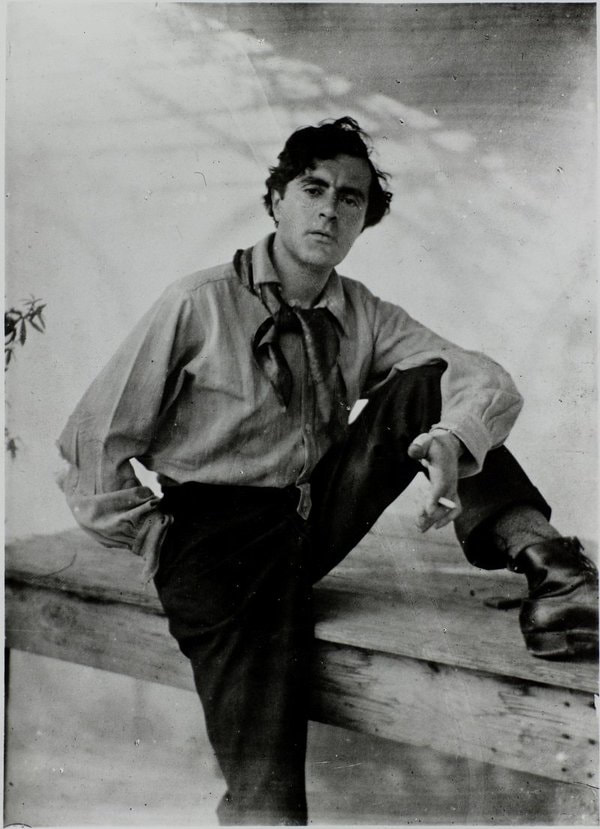
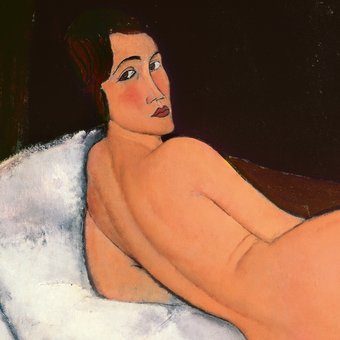
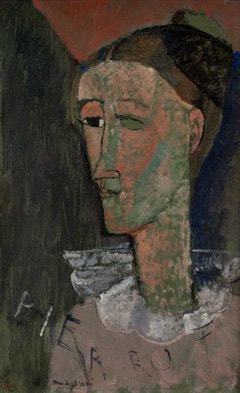

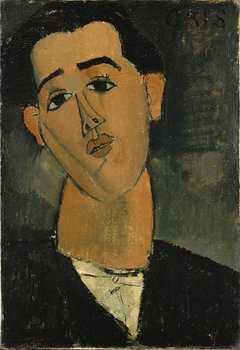

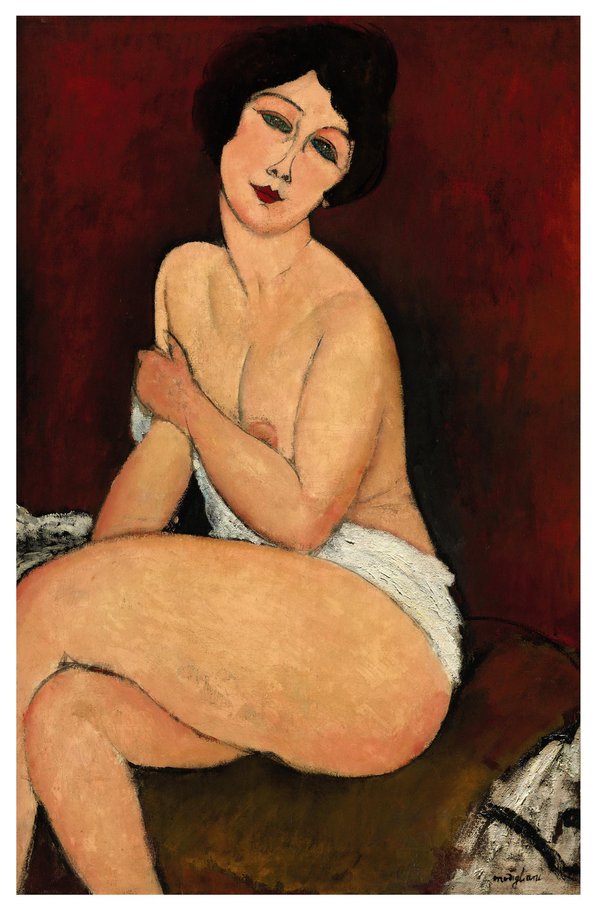
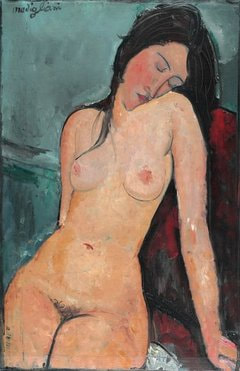


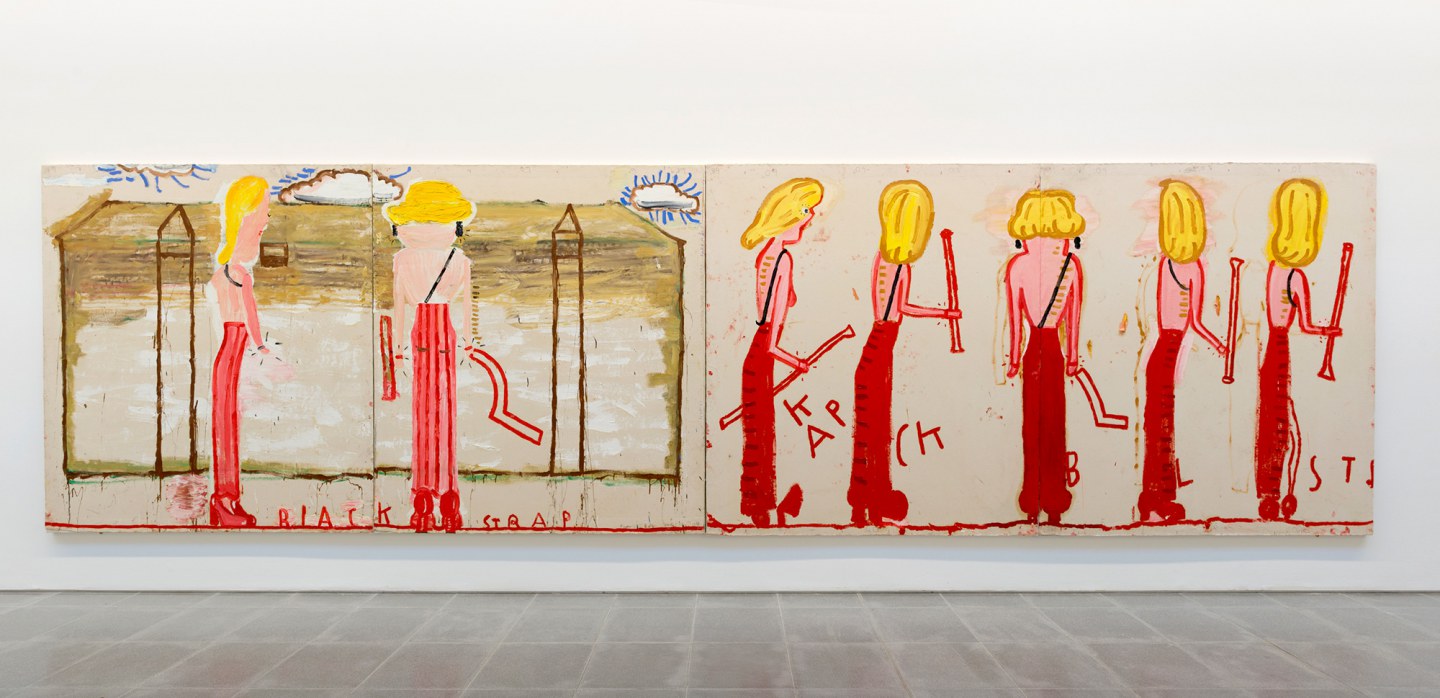
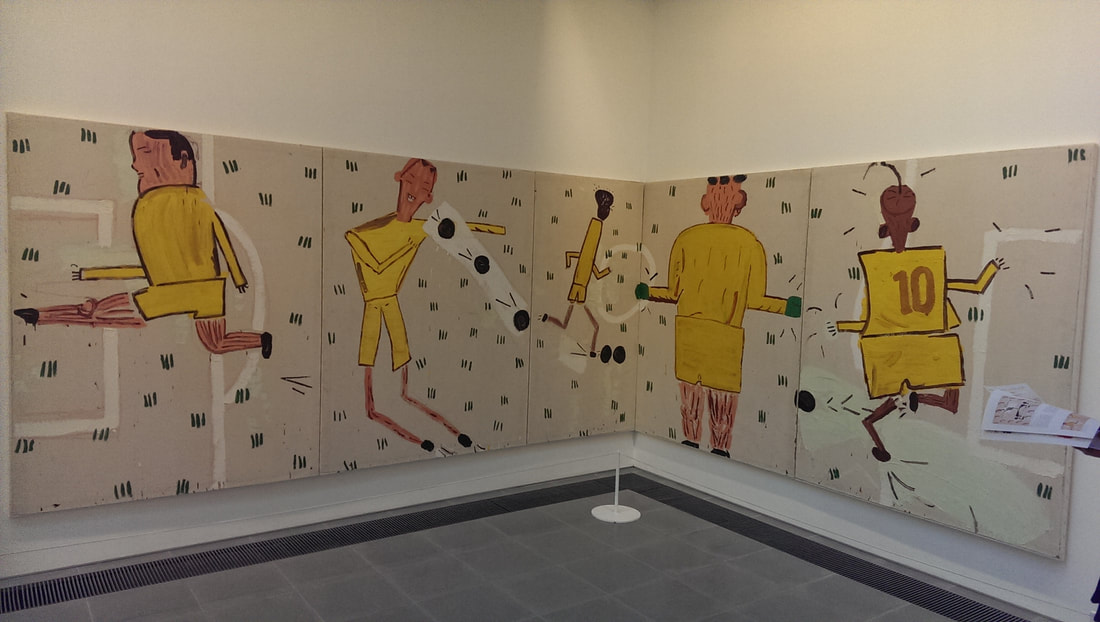


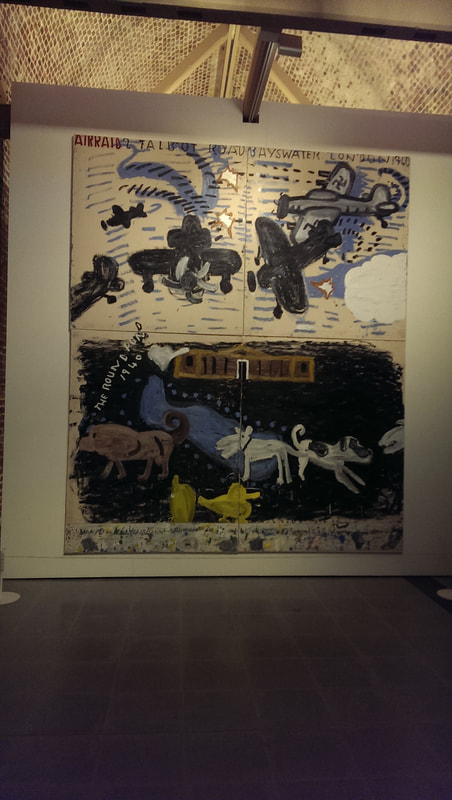


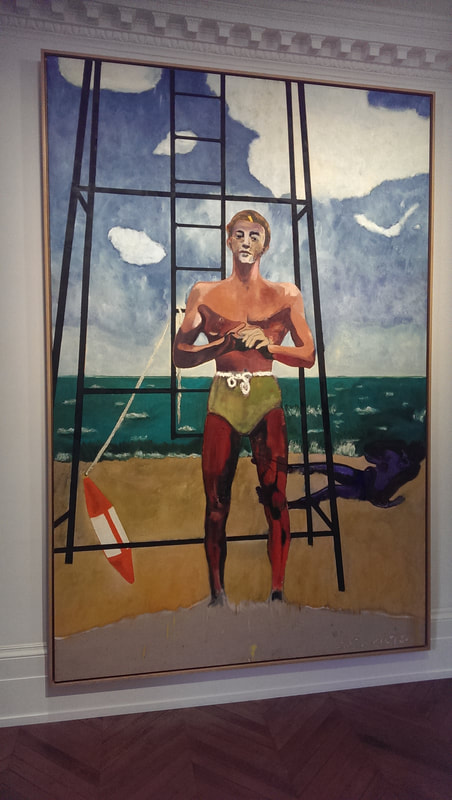
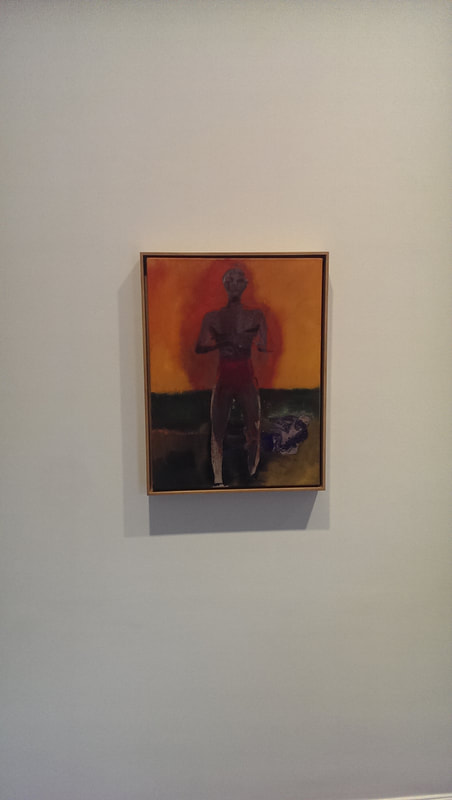
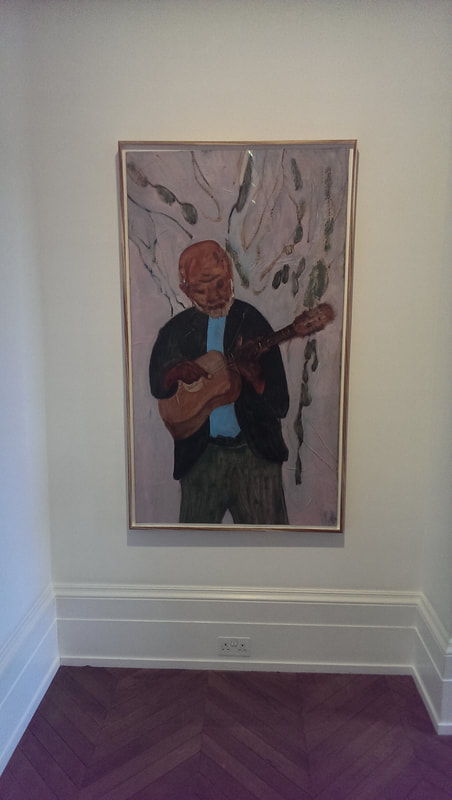

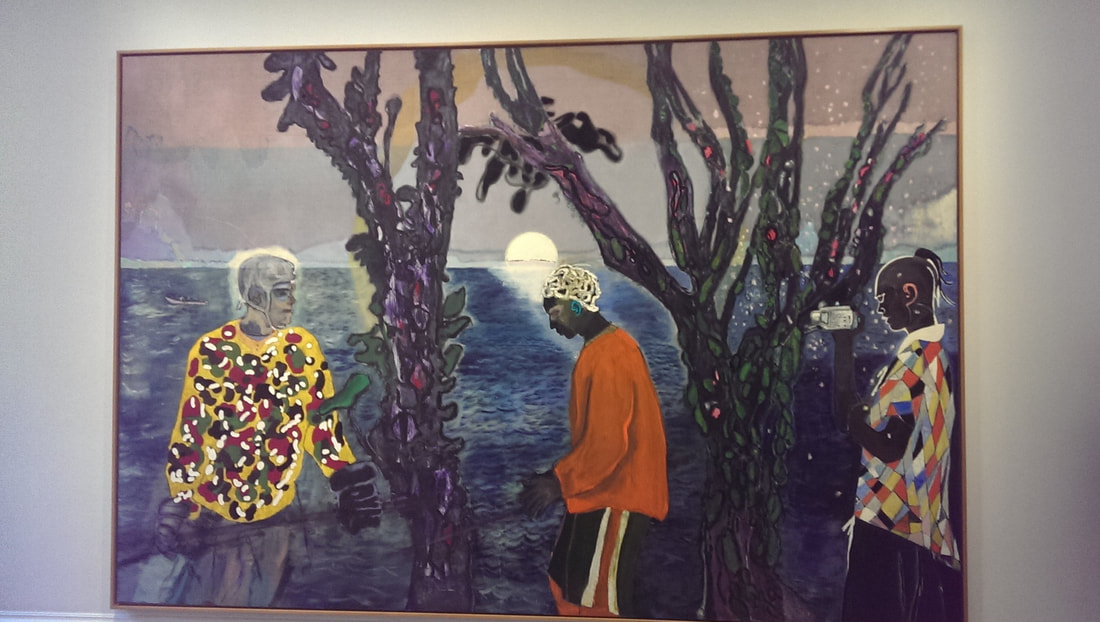


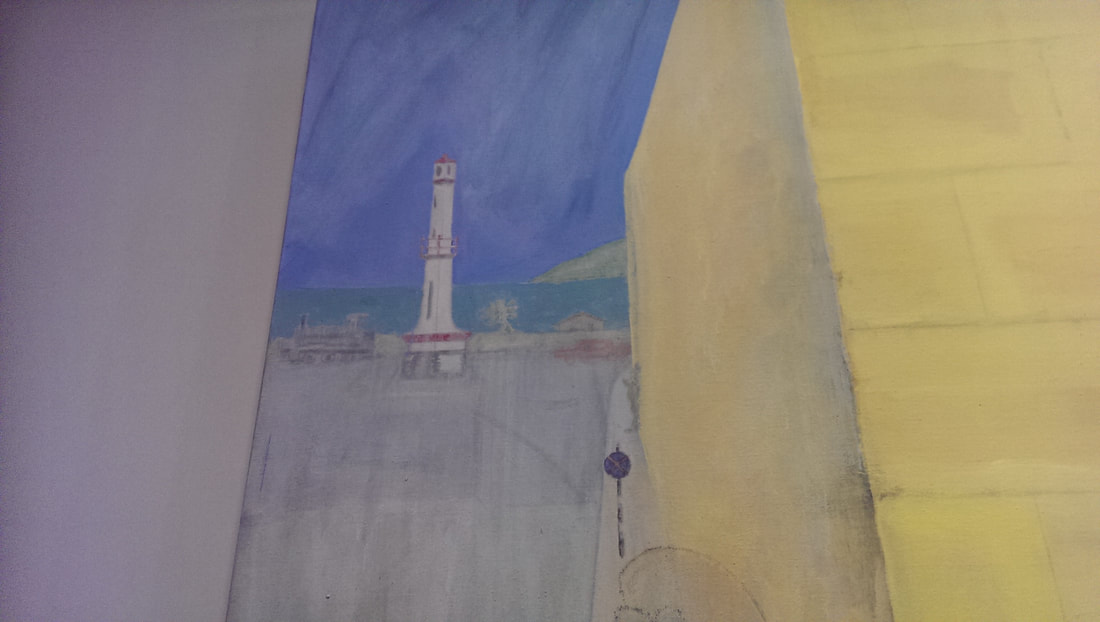
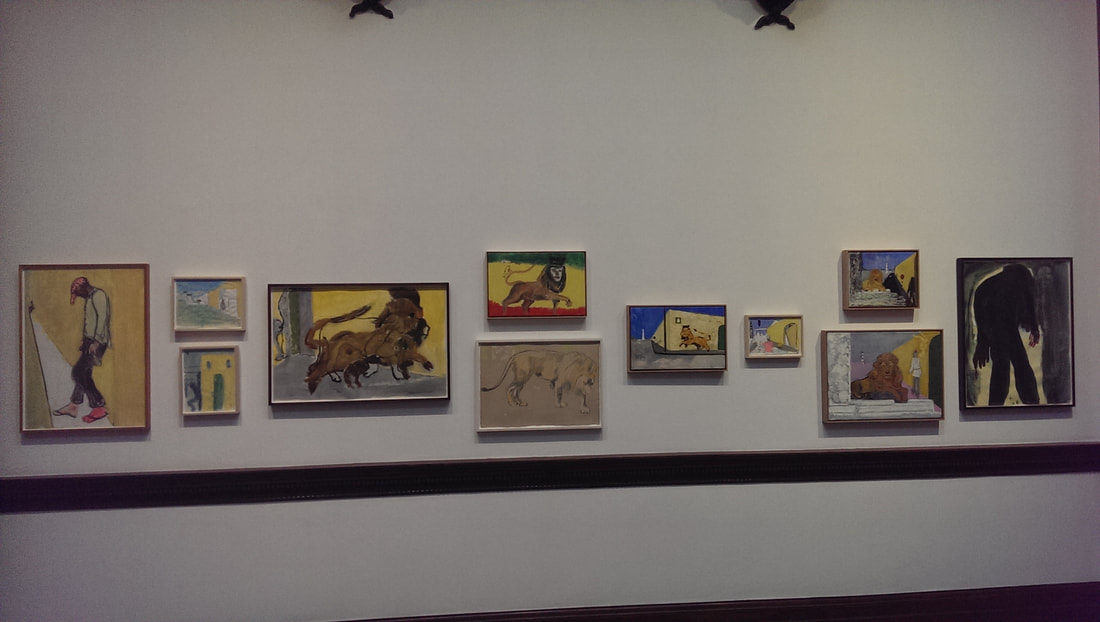
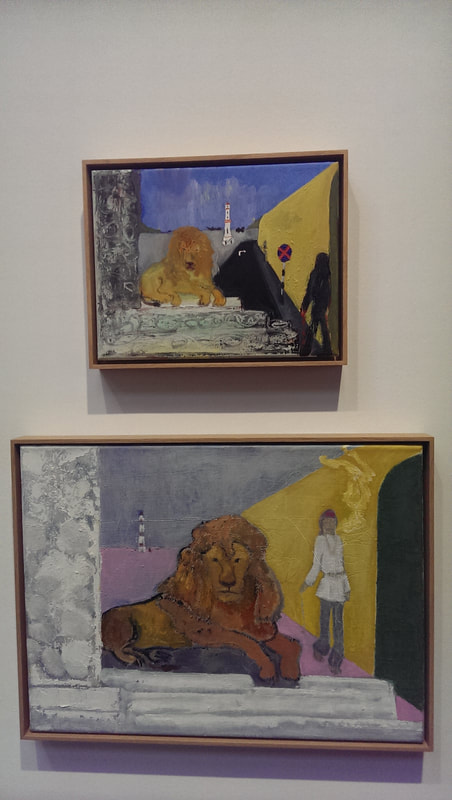
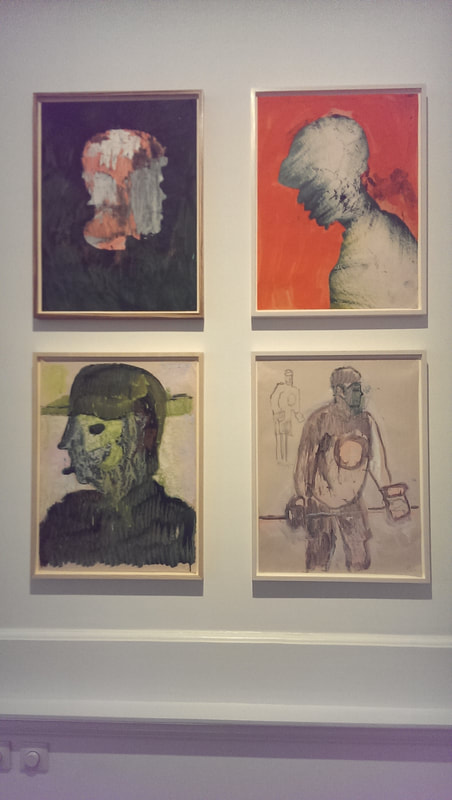



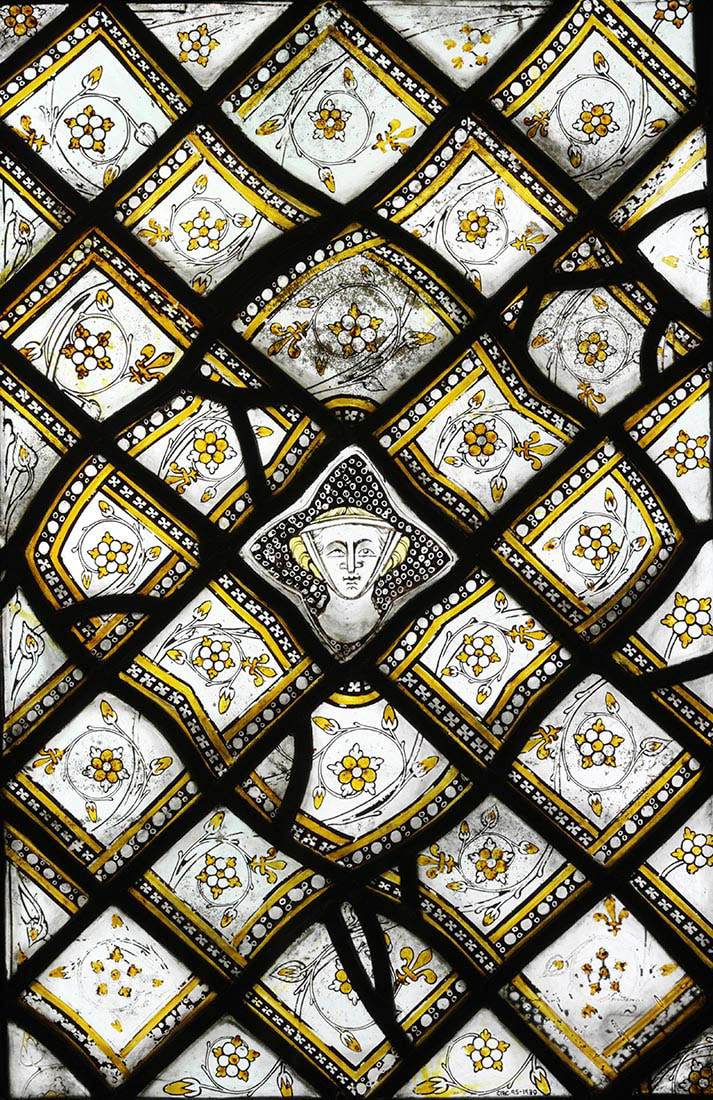

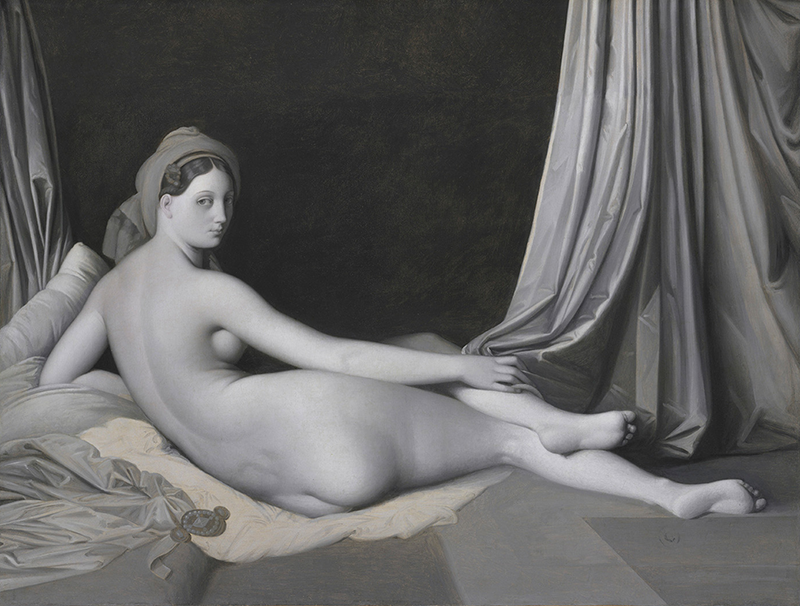

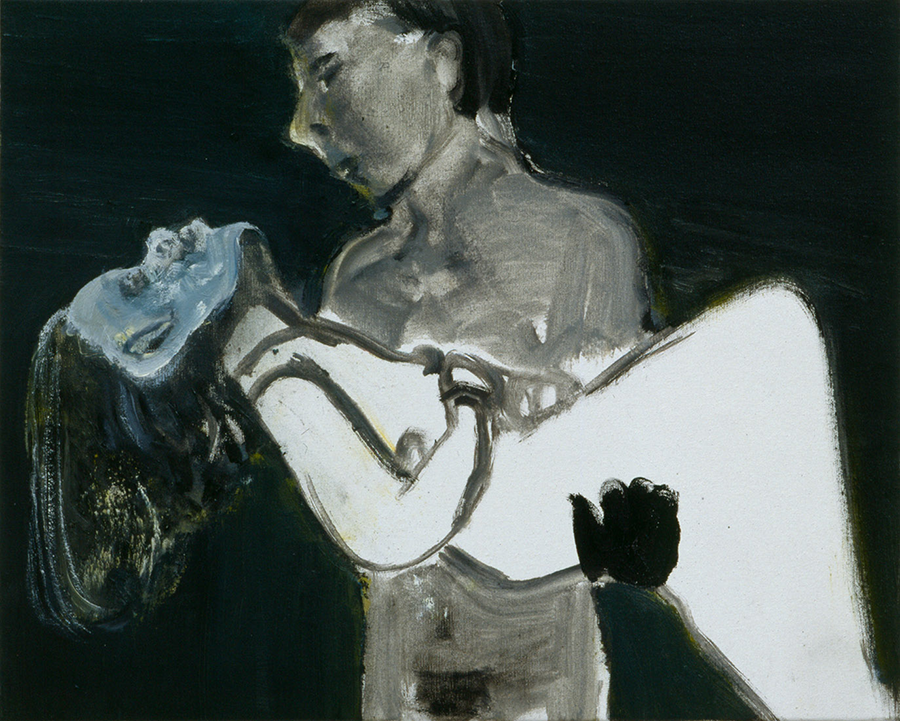
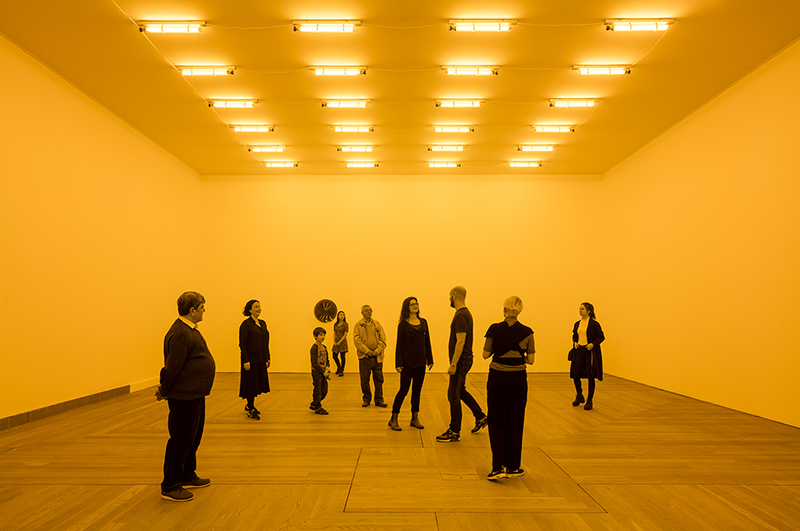
 RSS Feed
RSS Feed